
JAPANESE PRINTS
A MILLION QUESTIONS
TWO MILLION MYSTERIES
Ukiyo-e Prints浮世絵版画 |
|
formerly Port Townsend, Washington now Kansas City, Missouri |
|
|
UTAGAWA TOYOKUNI III 三代目歌川豊国 1786-1865 |
|
|
|
Arimatsu between Chiryū and Narumi |
|
|
|
From Fifty-three Stations of the Tōkaidō Road |
|
|
|
Subject: Fuwa Banzaemon 不破伴左衛門 |
|
|
|
Actor: Ichikawa Danjūrō VIII 八世代市川団十郎 |
|
|
|
Date: 1852, 10th Month Kaei 5 嘉永5 |
|
|
|
Publisher: Tama-ya Sōsuke 玉屋愡 |
|
|
|
Size: 14 1/8" x 9 1/4" |
|
|
|
Signature: Toyokuni ga |
|
|
|
There is another copy of this print in the Museum of Fine Arts in Boston, the National Museums of Scotland
in Brussels. |
|
|
|
$165.00 SOLD! |
|
|
The more I study this print the more interesting the road I find myself on.
When Danjūrō VIII committed suicide in 1854 the theater world was shaken to its core. There was a remarkable outpouring of grief and many shini-e or memorial prints were produced. One of these was a print which is unsigned but which is attributed by some to Kuniyoshi (see the small inserted print shown below in this box). Toyokuni III also produced at least one shini-e in honor of this actor and therein lies the surprise. The Toyokuni III print is exactly the same as the one shown featured on this page with the exception of the background and cartouche. These have been removed and replaced by a new block with a memorial inscription. The colors, too, are different. They are much more subdued in the robes which are printed in the light blue colors often used for burial. There is a touch of color, but mainly the robes are blue.
There is one other very striking similarity between the Toyokuni III print shown on this page and the memorial print which reused so many of the same blocks two years later: both seemed to be trimmed on the right side in exactly the same place. That raises a new problem: Is this print trimmed? I have priced it appropriately with that in mind. Or, was it printed this way? I think the latter is more likely considering the uncanny similarities. |
|
On July 12, 2005 we added new information about the suicide of Danjūrō VII. When you go to that page you will see what it is. |
|
Click on the image above attributed to Kuniyoshi to read more about shini-e and the death of Ichikawa Danjūrō VIII. |
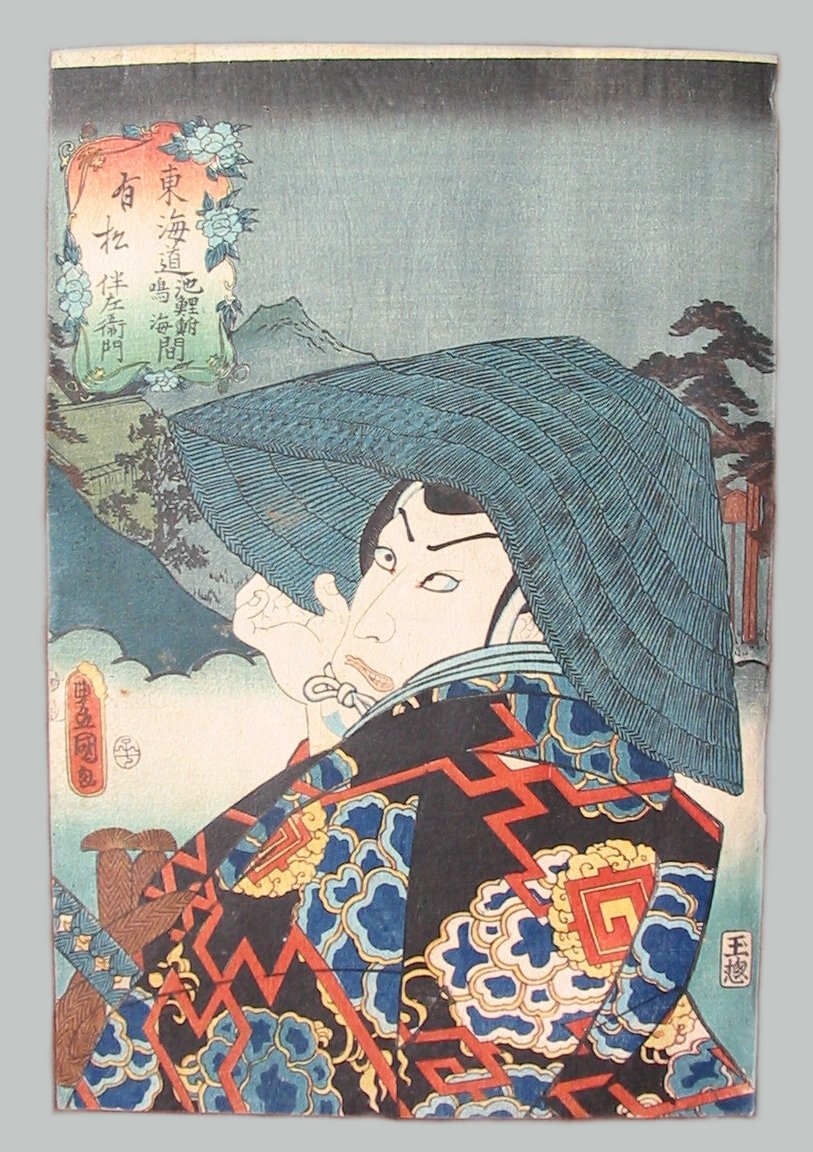
|
The Fitzwilliam Museum at the University of Cambridge has a web site dedicated to "Kunisada and Kabuki" featuring part of its collection of Japanese prints. Among these there are several showing Fuwa Banzaemon. The authors, Craig Hartley et al., note that the robe worn by Banzaemon is decorated with a pattern which is appropriately named 'lightning-in-the-clouds' and that he carries a sword named 'Thunder'. The hilt of a sword is visible in the lower left of the print shown above.
To visit that site click on the "Kunisada and Kabuki" enclosed within the toshidama seal below |
|
|
||
|
Above is a detail of an alternative inking of Banzaemon's robe as it is seen in the death print dedicated to Danjūrō VIII. |
|
The image below is show courtesy of www.kabuki21.com the best kabuki site on the Internet. |
|
|
|
|
|
|
|
Danjuro VII, the father of Danjūrō VIII, playing the same character Fuwa Banzaemon in 1827. |
|
Date Seal: 1852, 10th Month |
|
This is not a particularly important print, but it is certainly a good one. Market value determines whether or not a print sells for $165.00 or for thousands like so many sought after, high quality Utamaros or Hiroshiges. But markets are often fickle and based upon things other than pure aesthetics. Rembrandt's true market value didn't begin to kick in until the early decades of the nineteenth century approximately one hundred and fifty years after his death. Not only that, but Rembrandt had died in penury. Vermeer was not rediscovered until the 1870s. Did that make him less valuable? And Van Gogh must have turned over in his grave when a Japanese buyer purchased his portrait of Dr. Gachet for more than $80,000,000 in 1990. Immediately after its purchase it was put in a vault and remained there unseen for a number of years. The art world gasped audibly --- and Van Gogh continued to revolve --- when the owner mused that he wanted the painting cremated with him following his death. So tell me: how does one determine value?
"God is in the details"
In 1959 Mies van der Rohe said "God is in the details."* I mention this quote because after looking a little more closely at this print the other day I noticed a design touch that could have easily been overlooked: the straw hat worn by Danjūrō VIII is more lovingly complex than first meets the eye. There are three distinct weaving patterns: 1) the main body of the hat; 2) the brim; and 3) the isolated area in front in two tiers immediately above the brim which is woven in such a way as to allow the wearer to see clearly when the hat is pulled down to disguise his identity. Seen straight on this part of the hat is much more obvious. The artist or the publisher or the printer could have glossed over these details in favor of a simplified design, but they didn't. This speaks to the general nature of what makes so many Japanese woodblock prints so astoundingly remarkable.
Years ago I visited a cousin of mine whom I admired enormously. He was very bright, my age, had gone to Yale and lived on the Upper East Side of Manhattan. We visited the Frick Museum together and while standing in front of one of the Veronese paintings I asked him if he saw the goat's head motif. He said no he didn't and didn't want me to show it to him. But me being me I couldn't help myself and tried to point it out. We have hardly spoken since that day and that was more than twenty years ago. There are many people who find it unnecessary and a waste of time to pour over the details of an image like that of the Veronese, but I am not one of them. Veronese chose the goat head motif for a reason and similarly the artist/artisans of this print chose to labor over the straw hat. |
|
編み笠 AMIGASA THE BRAIDED HAT |
|
Seigle noted the construction of teahouses along the 320 foot long zig-zag road leading from the Primping Hill to the Great Gate of the Yoshiwara. Men would stop at these to freshen up and some would even change their clothes to impress the ladies. "Some of these establishments were amigasa-jaya (woven-hat teahouses) where samurai clients could rent a hat to make themselves less conspicuous."** |
|
This particular type of amigasa is referred to as a 深網み笠. |
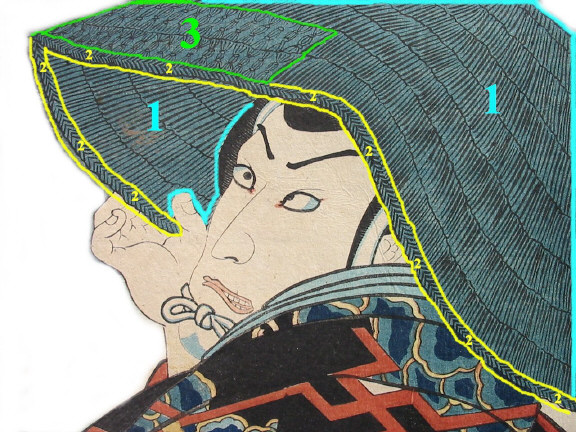 |
|
*Some sources claim that Flaubert said "Le bon Dieu est dans le detail" in the nineteenth century, but he said it in French and Mies said it in English. That's good enough for me. **Yoshiwara: The Glittering World of the Japanese Courtesan, by Cecilia Segawa Seigle, University of Hawaii Press, Honolulu, 1993, p. 64. The jaya or chaya kanji and kana are 茶屋 and ちゃや. |
|
AND... |
|
Click on the image shown above to see the full Kuniyoshi print. |
|
There are other representations of woven hats like the one seen above. Itinerant monks or komusō (虚無僧) wander the countryside wearing tengai (天蓋) or "basket-shaped woven rush hats", carrying curved bamboo flutes or shakuhachi (尺八). However, not everyone so attired is actually a monk. Sometimes theatrical/historical figures like the Soga brothers or a character from the "Tale of the 47 Loyal Retainers" disguise themselves in these outfits. In fact, even lovers on a tryst were portrayed this way by Harunobu and Shunshō. According to one source there was "...vogue for komusō prints about 1770..." because of the popularity of a dance sequence "...incorporated in the play Sono Sugata Shichi-mai Kishō (Her Lovely Form: A Seven-page Written Pledge)..."* |
|
* The Actor's Image: Print Makers of the Katsukawa School, Princeton University Press, Timothy Clark and Osamu Ueda with Donald Jenkins, 1994, p. 152. |
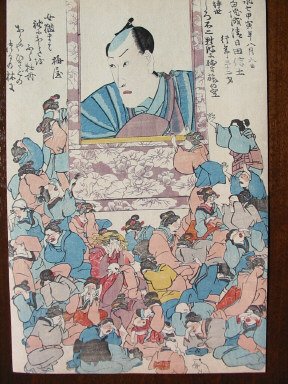
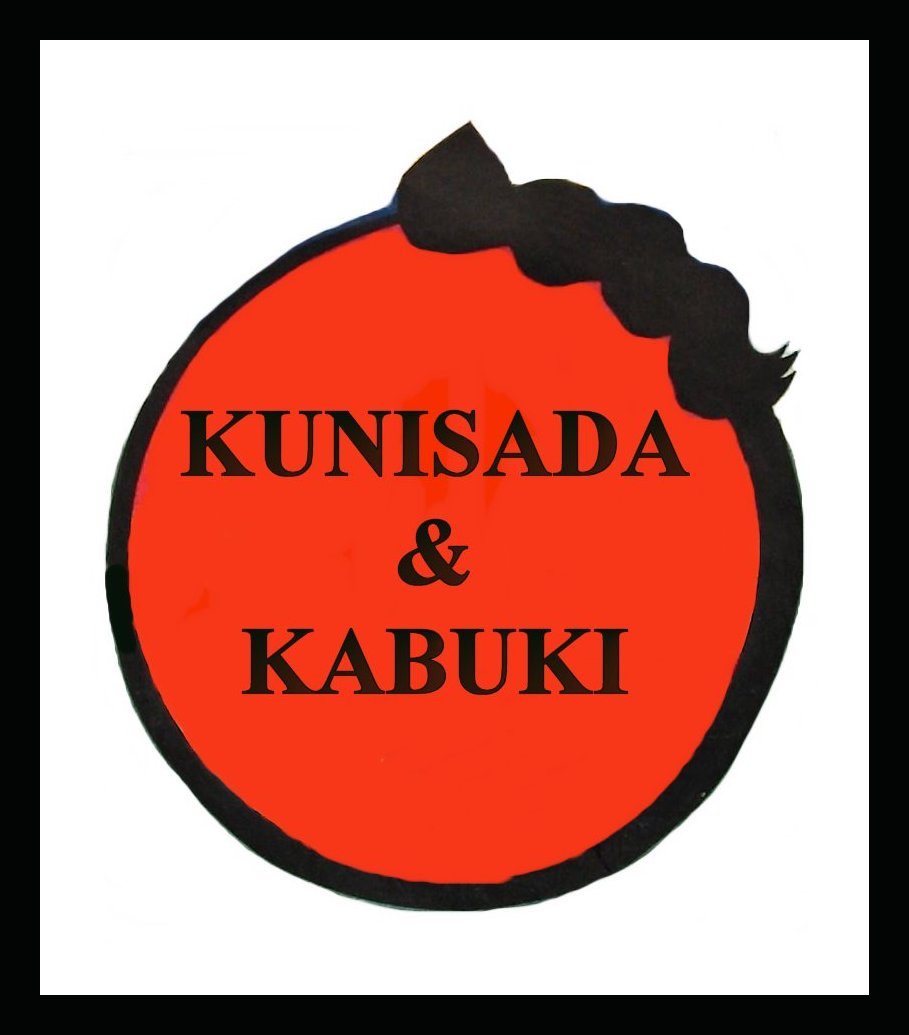
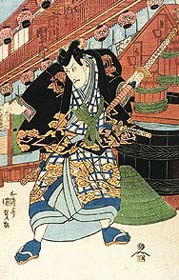
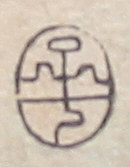
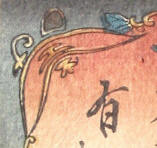
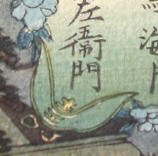

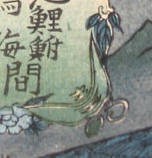
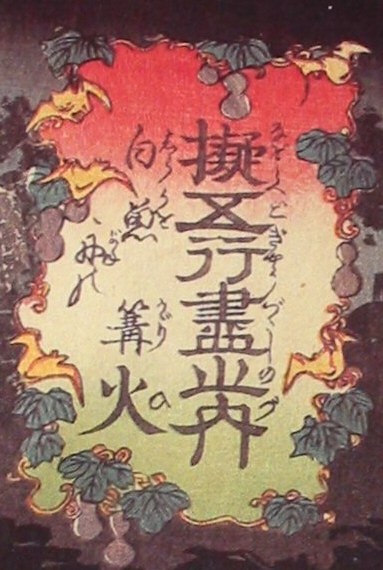
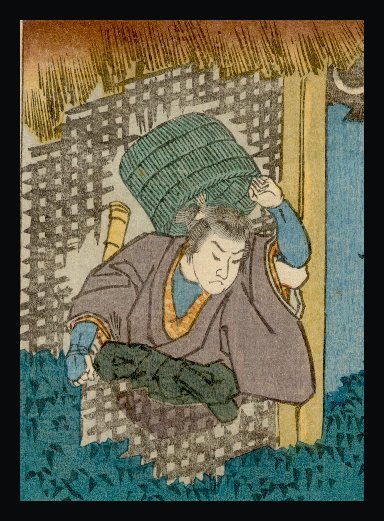
 HOME
HOME